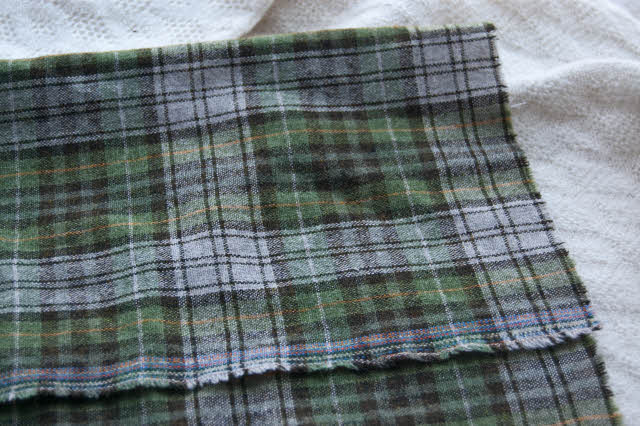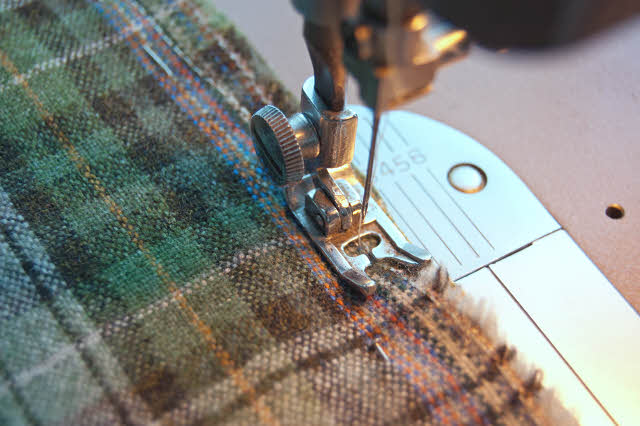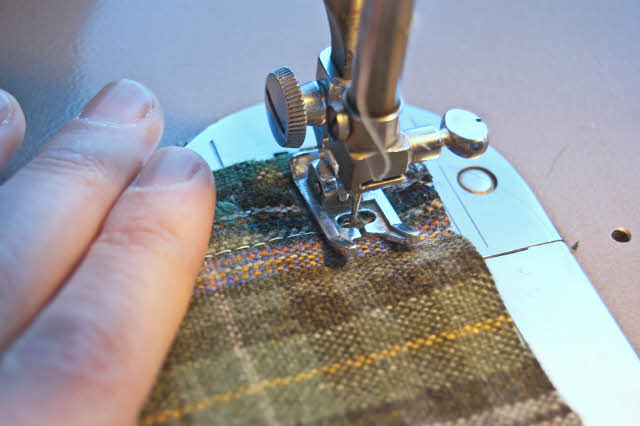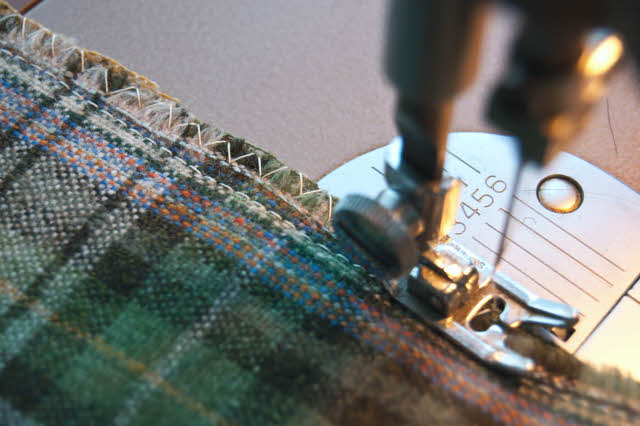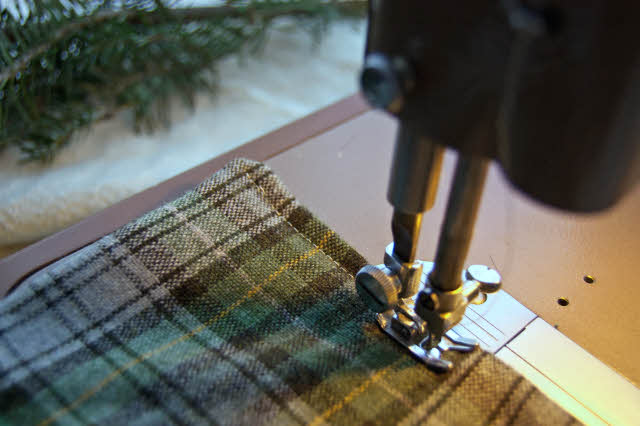By Julia Marchand
If you’re a long-time sustainablog reader, it’s possible you’ve read all about the negative impact fabric can have when it breaks down in a landfill. Ever the innovative environmentalist, it’s also likely that you enjoy a good upcycling tutorial. Today we’re going to combine these two topics to save your hole-y blankets by turning them into an eco-chic scarf (just in time for holiday gift giving and winter weather!). So round up those old blankets and let’s get started!
Begin by gathering the necessary supplies. You’ll need an old blanket, of course, plus scissors, straight pins, a sewing machine and thread. If sewing makes you nervous (you’re not alone!), you could try using hem tape or fabric glue, but the finished product probably won’t have as long a lifespan as a sewn scarf would.
Turn That Old Blanket Into A Gift-Worthy Scarf
Step 1: It’s best to start almost every sewing project by washing and ironing your fabric (exceptions to this rule would be for fabrics that require special care like fur or leather). Make sure you’re preparing your fabric properly by following washing instructions and using your iron on the correct setting.
Step 2: Taking into account any holes or stains your blanket has, decide how big you want your scarf to be. The objective is to crop those out and use only the parts of the blanket that are still in good condition. Once you’ve determined your measurements, fold the blanket right side in and pin it in place, so your scarf is made up of two layers of fabric.
Step 3: Giving yourself a half-inch seam allowance, cut the scarf from the rest of the blanket. You’ll be left with a long, thin piece of fabric that is folded in half (this should be the final size you want plus seam allowance).
Step 4: Now at your sewing machine, set yourself up to begin sewing on one of the short edges at the folded side of the fabric. Start by backstitching an inch or so from the edge of the fabric, then sew forward again from that folded corner on.
Step 5: When you reach the next corner of the scarf, make sure your needle is down in the fabric (this will act as a sort of pin keeping everything in place while you rotate the scarf to switch the direction of your sewing). Now lift the presser foot and rotate your fabric 90 degrees so you can continue to sew all the way down the open long edge. Lower the foot and continue sewing the long side.
Step 6: At the next corner, do not rotate again to stitch the last short edge, since you’ll need this to stay open until you turn your scarf right side out. Instead, backstitch over the last inch or so of your seam and trim your scarf away from the machine.
Step 7: Set yourself up again to stitch the short side you’ve already sewn closed. This time, though, we’ll be using a zigzag stitch right along the edge of the fabric to prevent fraying and extend the life of the accessory. Consult your manual to set the stitch width for a zigzag, backstitch a little to begin, then sew the one short side and the one long side that you’ve already stitched shut. When you reach the end of the long side, backstitch and trim again.
Step 8: Turn your scarf right side out and tuck the one open edge in about an inch all the way around. Iron this down so the edges are crisp, and sew it closed with a topstitch about a quarter of an inch from the edge of the fabric. Continue this topstitch all the way around the garment if you want uniformity. You’re done!
You’ll be left with a new (newly reinvented, anyway) scarf, some more blanket scraps (matching mittens, anyone?) and the satisfaction of accomplishment. Wrap it up and give it as a present this holiday season and you’ll prove it’s possible to make it through December without contributing to the wastefulness of excessive consumerism.
Have you ever made a gift for someone out of waste material you had around the house? Upcycling allows you to feel good about your green gift giving and can encourage family and friends to do the same. Share your creativity in the comments to inspire others this holiday season!
Julia Marchand writes for eBay about sustainability, upcycling and living a greener lifestyle. When upcycling isn’t an option, selling her unwanted clothing online is another way that Julia reduces her waste (here).



